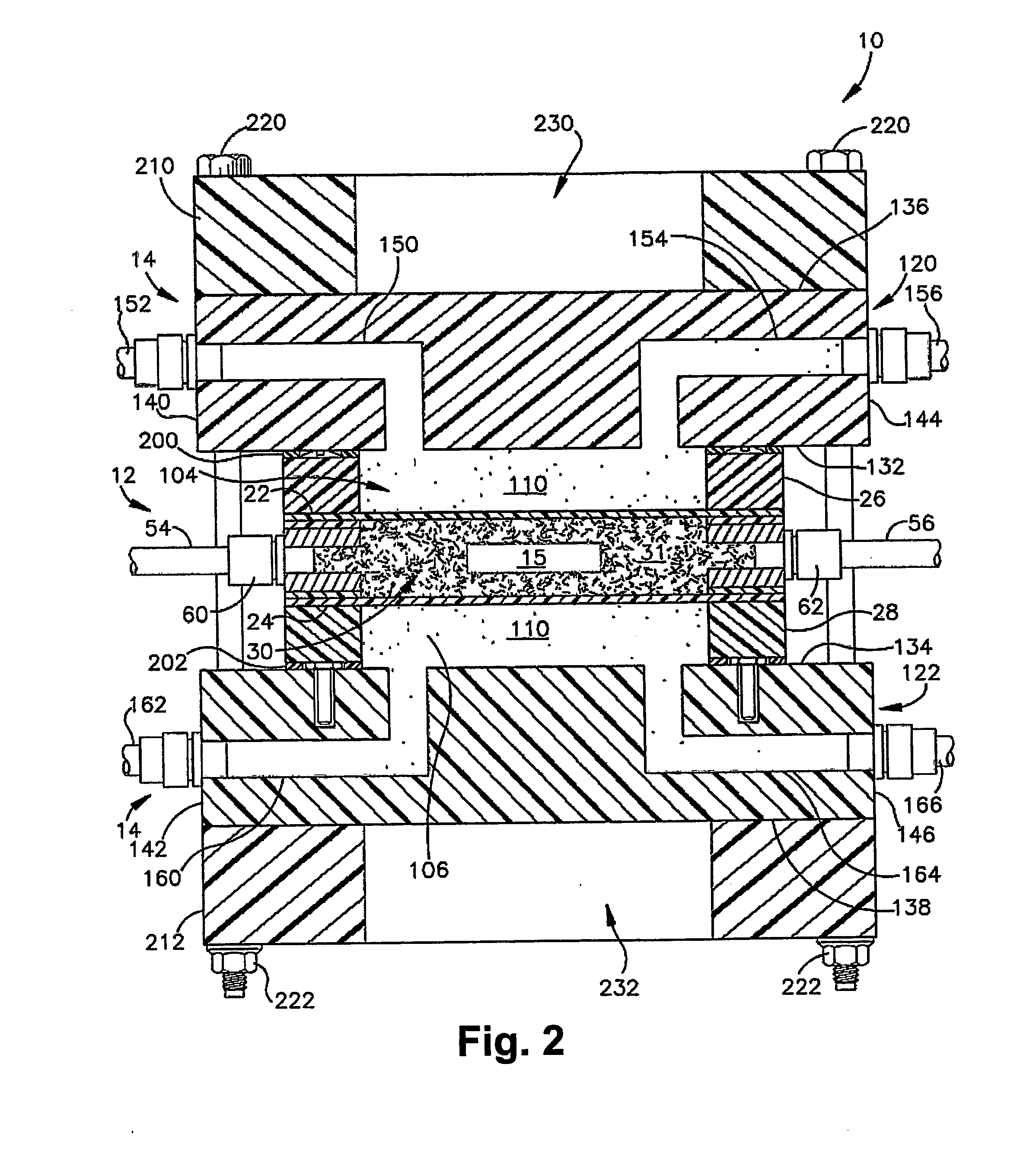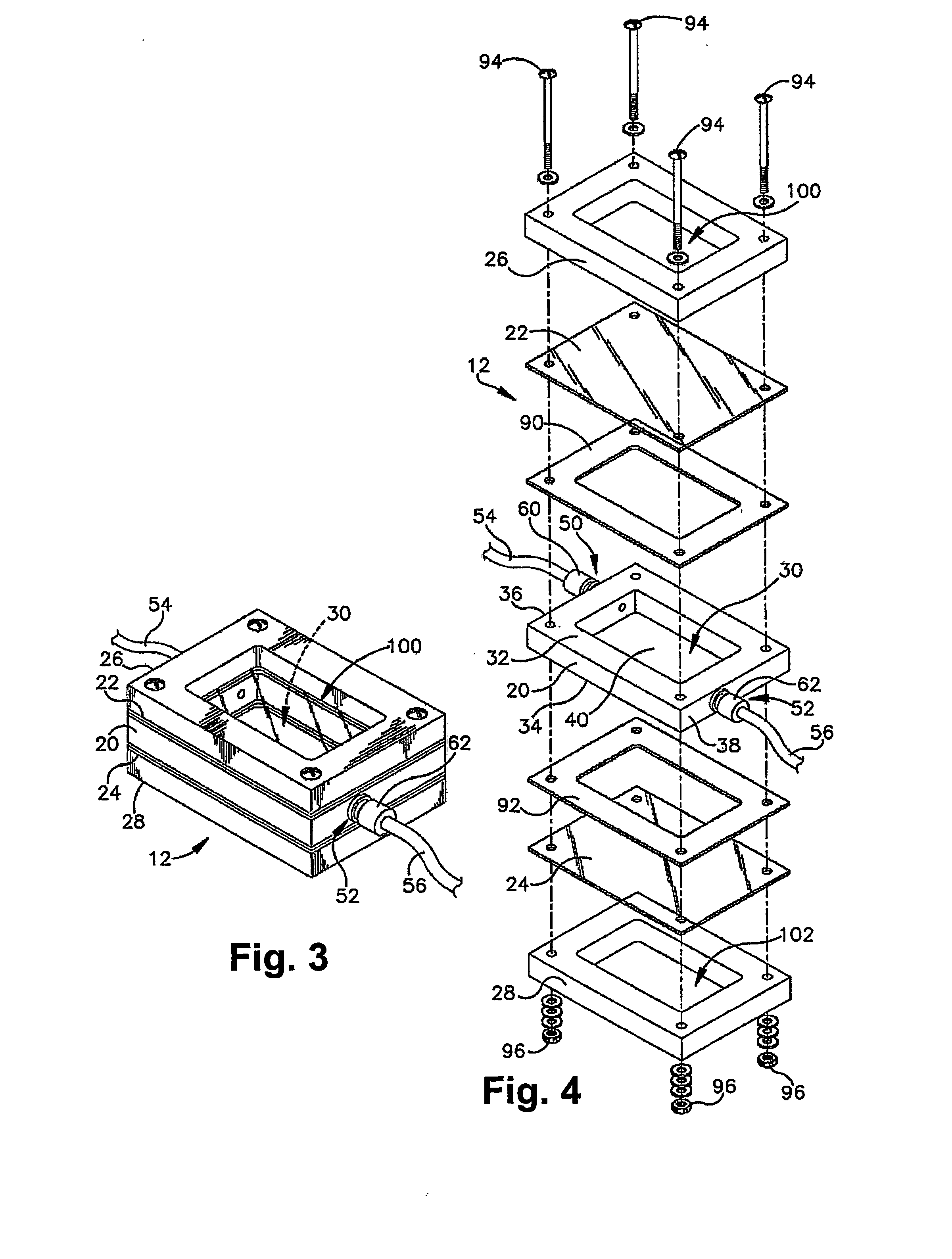Apparatus and method for tissue engineering
- Summary
- Abstract
- Description
- Claims
- Application Information
AI Technical Summary
Benefits of technology
Problems solved by technology
Method used
Image
Examples
example 1
A Multichannel Fiberoptic Spectrophotometer for Monitoring Bioreactor Medium pH
Introduction:
[0087] Miniaturized bioreactor systems are becoming an increasingly useful tool in tissue engineering applications. Our laboratory is currently exploring their use for the generation of large cartilage implants for the repair of cartilage defects. In these studies, we assemble mesenchymal precursor cells at very high densities (up to 100×106 cells / ml) and carrier matrices to form composite grafts of up to 2×2 cm. The precursor cells are then induced to differentiate along the chondrogenic pathway in a bioreactor system.
[0088] A major technical problem associated with the in vitro maintenance of large constructs, in which tens of millions of cells are bathed in a few ml of culture medium, is the maintenance of an appropriate supply of fresh medium. The replacement rate must be adequate to satisfy the metabolic needs of the cells, to supply needed growth factors, and to wash out waste produ...
example 2
A Pre-Treatment Regimen to Improve Chondrogenesis by Adult Bone-Marrow Derived Mesenchymal Progenitor Cells
Background:
[0105] Successful tissue engineering of articular cartilage has the potential to revolutionize the therapy of degenerative joint disease. Adult human mesenchymal stem cells (hMSCs) are attractive candidates for this role due to their documented osteogenic and chondrogenic potential, and ease of harvest and mitotic expansion. For this purpose, mesenchymal stem cells have to be harvested from the donor, and expanded in culture, sometimes considerably, in order to obtain sufficient numbers of cells to seed biodegradable scaffolds at high densities. To obviate immunological complications, the use of autologous cells is preferred. The cells are isolated from a bone marrow biopsy and must be expanded in culture. This adds a lag time of several weeks between the initial harvest of the cells, and the implantation of the completed construct into the cartilage lesion. Any a...
example 3
A Method to Improve Chondrogenesis by Adult Mesenchymal Stem Cells
Background:
[0116] Successful tissue engineering of articular cartilage has the potential to revolutionize the therapy of degenerative joint diseases. This is particularly true of cartilage tissue engineering based on bone marrow-derived mesenchymal stem cells. This approach has the potential to allow the creation of very large amounts of new cartilage tissue for implantation without the need for harvesting healthy articular cartilage from a non-affected area.
[0117] A common implementation of cartilage tissue engineering, which we use as well, is to seed a biodegradable carrier scaffold with cells. The carrier scaffold provides the initial structural properties of the construct, and is then gradually replaced by the cellular component and its products. To support and maintain the cells and their functions during this process, nutrients must be provided to the cells, and waste products must be cleared. tissue-engine...
PUM
 Login to View More
Login to View More Abstract
Description
Claims
Application Information
 Login to View More
Login to View More - R&D
- Intellectual Property
- Life Sciences
- Materials
- Tech Scout
- Unparalleled Data Quality
- Higher Quality Content
- 60% Fewer Hallucinations
Browse by: Latest US Patents, China's latest patents, Technical Efficacy Thesaurus, Application Domain, Technology Topic, Popular Technical Reports.
© 2025 PatSnap. All rights reserved.Legal|Privacy policy|Modern Slavery Act Transparency Statement|Sitemap|About US| Contact US: help@patsnap.com



